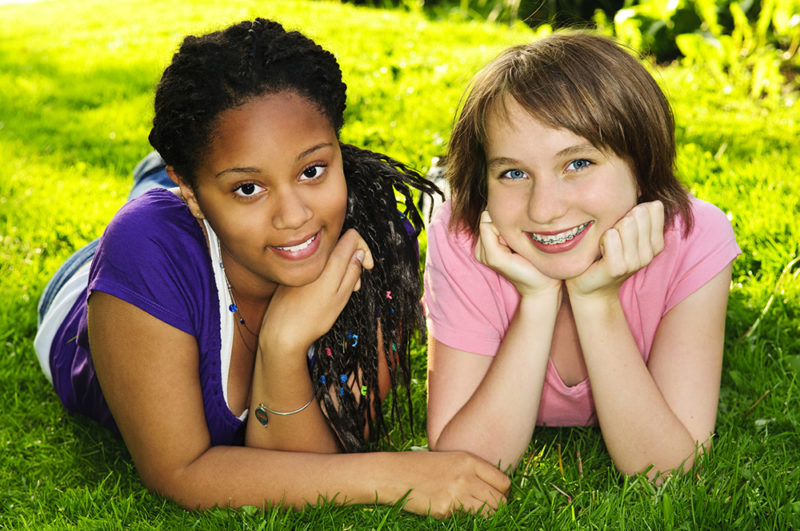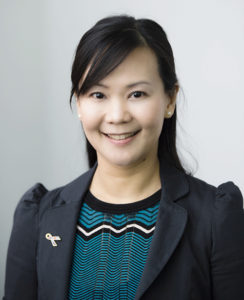The early changes of puberty usually occur between the ages of 9 to 13 years (Odel, 1989). They are noticeable in girls by the budding of breasts and then pubic hair, with menstrual periods starting between 11 to 14 years of age. Boys usually develop testicular enlargement and then pubic hair between the ages of 9 to 14 years. Underarm hair, facial hair and deepening of the voice in boys occur typically between 13 to 16 years. If there are concerns about delayed puberty, or signs of puberty that occur at an earlier age than usual, it may be necessary to refer to a specialist paediatric endocrinologist for an assessment.

Some schools may address puberty and sex education at an age appropriate level, but others may not. Preparation for this discussion is advisable as children with autism need a longer period of time to understand and adjust to changes in their bodies. Even in children who do not have autism, puberty can be a difficult transition due to hormonal changes and mood swings are commonly reported. For a child with autism who cannot understand what is going on, it can be so much harder and behaviours such as emotional swings, aggression, self-harming and masturbation can sometimes be escalated (Paul, 2008). In children with Autism Spectrum Disorders (ASD) or special needs, communication issues are common and many children may not be able to express their emotions (Osterlin et al, 1994).
Help your child understand and cope with visual aids and be explicit in your language and communication with a child with autism (Charlop-Christy MH, 2002). Explain and use labelled pictures to explain about when puberty happens and how each part of the body will change including what fluids will come out- such as sweat, tears, semen, menstrual blood, and vaginal discharge. The use of visual aids will often help with developing a routine for hygiene in a step-by-step manner such as which parts of the body are needed to pay special attention to in the bath or shower, how to shave and how use a menstrual pad. Do not “assume knowledge” in your child (Light et al, 1998).

May Ng, MBBS, MSc, LLM, PhD
During pubertal years, it is not uncommon to have sexual urges and your child may masturbate. This is a healthy and normal part of pubertal development. It is important to explain and discuss and reassure and some of these new sensations can cause anxieties. Teach your child the difference between being in public and in private, and that some activities could only happen in private such as undressing or masturbation. Teach your child safety; how to say “no,” that he /she should not let anyone touch his/her private parts, that he/she should never touch anyone else’s, and that he/she should tell you if anything like this ever happened. Note that child sexual abuse and exploitation is higher in children with special needs (Tharinger et al, 1990).
Many adolescents can begin to develop a romantic interest in the opposite sex, or same sex. Help your child to understand these feelings and what sexual relationships are. This can be supported by using social stories and visual drawings using stick figures or photographs. It is likely that your child may already have developed a curiosity about the topic. If he/she shows an awareness, be prepared to discuss this and let them ask you questions. Topics can progress through from what is sexual intercourse, to gaining sexual consent and the importance of protected sex as they develop further understanding.
Puberty is an important developmental stage with changes that occur physically, emotionally and socially. As parents and caregivers, puberty can be challenging and being prepared and informed on how to approach any issue as they arise is advisable.
Quick Tips
- Puberty brings a raft of new challenges that can be behavioural, so make sure you are fully prepared
- Do not “assume knowledge” in your child. Explain and use pictures to explain about when puberty happens and how each part of the body will change
- Use visual aids to teach your child to how to be hygienic and, be explicit with naming private parts of the body
- Teach them to say ‘no’ and difference between private and public behaviours such as masturbation and undressing only in the private room
- Teach them about personal safety and internet online safety
- Always be involved in your child’s curiosity, be prepared to discuss and let him/her ask you questions
Professor May Ng, MBBS (Hons), FHEA, FRCPCH, MSc, LLM, PhD, is a Consultant Paediatric Endocrinologist and Honorary Associate Professor at the University of Liverpool, United Kingdom. She completed her undergraduate degree under full scholarship in University of Sydney, Australia and her paediatric training in Australia and the United Kingdom. She was the recipient of the prestigious UK Medical Research Council Fellowship and completed further training to obtain a Masters in Medical Science and PhD degree in paediatric endocrinology and diabetes. Dr Ng also holds a Master of Laws degree and is active in medico-legal work. She is Chair of the UK Association of Children’s Diabetes Clinicians, Officer for British Society of Paediatric Endocrinology and Diabetes and Training Advisor for Royal College of Paediatrics. She is in the Diabetes UK Council for Healthcare Professionals and Online Learning Committee for European Society of Paediatric Endocrinology.
She is an active researcher with over 150 publications and has presented at more than 150 scientific meetings. She serves on the editorial board for several international journals including as Editor-in-Chief and as Associate Editor and is a regular invited referee for many high impact journals. She is a clinical lead of multiple national award winning initiatives such as University of Liverpool Alumni Award 2020, Diabetes UK Mary Mackinnon Award 2018, winner of 2015 Diabetes Quality in Care award, Highly Commended runner up for Diabetes Team of the Year National BMJ Awards 2015, finalist for the HSJ Clinical Leader of the year 2015 and finalist in the UK Asian Woman of Achievement Award 2016.
Dr. May Ng is also a book author of A Journey with Brendan, documenting life with her son with autism as both a mother and paediatrician. Her twitter page is @mayng888 and website is www.paedsdoc.co.uk.
References
Charlop-Christy MH, et al. Using the picture exchange communication system (PECS) with children with autism: assessment of PECS acquisition, speech, social-communicative behavior, and problem behavior. Journal of Applied Behavior Analysis 2002;35(3):213–231
Light JC, et al. Augmentative and alternative communication to support receptive and expressive communication for people with autism. Journal of Communication Disorders 1998;31(2):153–178.
Odel W. Puberty. In: DeGroot L, editor. Endocrinology. Philadelphia: Saunders; 1989.
Osterling J, Dawson G. Early recognition of children with autism: A study of first birthday home videotapes. Journal of Autism and Developmental Disorders 1994;24(3):247–257
Paul, R. Interventions to Improve Communication. Child Adolesc Psychiatr Clin N Am. 2008 October ; 17(4): 835
Tharinger D, Horton CB, Millea S. Sexual abuse and exploitation of children and adults with mental retardation and other handicaps. Child Abuse Negl. 1990;14(3):301-12.






[…] Guiding Your Child Through Autism & Puberty see article […]